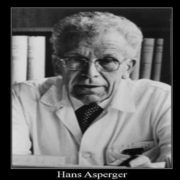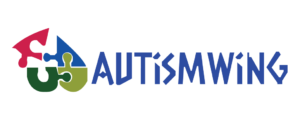Different Types of Autism Spectrum Disorders
Types of autism spectrum disorders depend upon different criteria of autism and it’s severity that prevails in the autistic children. The researchers have found out 5 major types of autism spectrum disorders in the year 1994 which are autistic disorders, asperger’s syndrome, pervasive developmental disorders, childhood dis-integrative disorders and Rett’s Syndrome.

In this article (in the following paragraph), I would like to discuss the 5 major types of autism spectrum disorders. It will help the parents, caregivers, teachers, and therapist to handle their children in proper manner.
Here, I would also like to discuss about the present classification of autism through Diagnostic and Statistical Manual (DSM-5).
Asperger’s Syndrome

In addition the individuals affected with asperger’s syndrome might have all or some of the following disabilities:
- Individuals with Asperger’s syndrome have problems in 02 areas-socialization and restricted pattern of interests.
- It is high functioning autism spectrum disorders.
- Mild symptoms of autistic disorders.
- They face emotional and social challenges.
- They show unusual behaviors or interests.
- They show clumsiness due to under developed motor skills.
- They undergo repetitive actions.
- They have sensory sensitivity.
- The asperger’s individuals often feel heavily isolated from their peers all the way into adulthood.
As per DSM-5, Asperger’s Syndrome is very similar to High functioning autism. As such the researchers have removed Asperger’s Syndrome from Diagnostic and Statistical Manual (DSM-5).
Autistic Disorders
This is also called classic autistic disorders. This is typically low functioning autism. Autistic disorder is severe than Asperger’s Syndrome and Pervasive Developmental Disorders (PDD). The major characteristics of autism are behavior problems, communication problems, social interaction problems and sensory sensitivity problems. Individuals with autism exhibit following features:
- Problems in socialization, communication and restricted patterns of behaviors and interests.
- Presence of abnormal or impaired development that is manifested before the age of 3 years.
- Extremely poor Social and communication skills.
- Lack in Motor and language skills.
- Significant language delay.
- Unusual behaviors or interests.
Pervasive Developmental Disorders-Not Otherwise Specified (PDD-NOS)
PDD-NOS is one kind of autism and commonly referred to as atypical autism. It is considered as one of the milder form of autism. It exhibits some (but not all) of the autistic characteristics such as social impairment, communication disabilities, and shows stereotype/repetitive behavior. PDD-NOS generally occurs during infancy, but the condition is usually not identified until the child is 3-4 years old. It meets some (but not all) criteria of Autistic Disorders and Asperger’s Syndrome. But PDD-NOS is more severe than Asperger’s Syndrome and less severe than Autistic Disorder. Individuals with PDD-NOS exhibit some of the following features:
- Problems in speaking and understanding language.
- Problems in socialization and communication.
- Poor eye contact.
- Prefer loneliness.
- Sometimes, may want to make friends but do not know how to do it.
- Do not understand facial expression and body language and do not know how to do it.
- Unable to show or understand any gesture.
- Difficulties in sensory issues like sound, light, touch, etc.
- Causes stress and anxiety for any changes in the daily routine, activity or in the living environment.
- Suffer from learning difficulties.
Childhood Dis-integrative Disorders (CDD)
Childhood dis-integrative disorders are also known as Heller’s Syndrome and dis-integrative psychosis. In this type of disorder, children develop normally for two years, then starts losing some of their language, social, and motor skills in the age between 2-4 years. Researchers have not yet found the cause of this type of disorders. Overall, the social, communicative and behavioral features of childhood dis-integrative disorder resemble those of autistic disorder.
The child will be found abnormal functioning in the following fields:
- Impaired non-verbal behaviors, failure to develop peer relations with no social and emotional reciprocity.
- Cannot start and maintain conversations with others.
- Repetitive/stereotyped behavior such as bobbing head up and down.
Rett’s Syndrome
Rett’s Syndrome is a neurological disorder occurs only in the girls. This type of autism spectrum disorder can be diagnosed and confirmed medically. The researchers have confirmed the problem as genetic. A girl child generally develops normally upto 6-18 months, then start losing her social and communication skills at the age from 1-4 years and resulting severe mental and physical disability in a long run.
- The head becomes small (microcephaly) and the brain growth is slower.
- Suffers from significant language and communication impairment.
- Repetitive hands movement including wringing, washing, clapping, and tapping.
- Problems deteriorate further with the increase of their age.
- These children have breathing problem.
- Difficulties in eating, chewing and swallowing.
- Sometimes, loose ability to walk even.
This Rett Syndrome is also excluded from autism as it is a genetic problem.
Diagnostic and Statistical Manual (DSM-5)
The above-mentioned classification of autism was valid from 1994 to 2013. The diagnosis of autism changed with the publication of the latest version of Diagnostic and Statistical Manual (DSM-5) in ay 2013. DSM-5 is Diagnostic and Statistical Manual used across the USA and a key text for many health professionals across the world. The key change in the latest manual is that now there is only one type of autism which is called autism spectrum disorders (ASD). ASD is diagnosed now by its severity i.e. level1, level2 & level3.
DSM-5 is Diagnostic and Statistical Manual used across the USA and a key text for many health professionals across the world. It is published in 2013. It mentioned 2 criteria for diagnosis of autism. These are as follows:
- Deficit in Social skills and social communications.
-Lack of eye contact
-Lack of empathy
-Difficulties using and understanding gestures, body language, facial expressions and tone of voice
-Difficulties in maintaining relationship
- Unusual patterns of behaviors and interests.
-Repetitive behaviors such as rocking, hand flapping, and lining up toys and other objects in a set pattern.
-intense fixation on a particular interest
-repetitive speech
-unusual reactions to sounds, smells, textures and visual stimuli
-high and inflexible need for established routines.
Latest types of classifications of Autism
Autism varies by severity and types and affecting kids. “Two kids with autism spectrum disorder (ASD) can behave very differently,” says Dr. Wilms Floet. Depending on the severity of the symptoms autism is classified as different levels as follow:
Level 1 (Requiring Support):
- Social Communication. This child speaks full sentences but lack in back-and-forth conversation. Make some odd or unsuccessful attempts to communicate with the peers.
- Restricted and repetitive behaviors. Very obvious.
Level 2 (Requiring Substantial Support):
- Social Communication. This child may speaks a simple sentence or limit his interaction to a specific interest.
- Restricted and repetitive behaviors. Very obvious
Level 3 (Requiring Very Substantial Support):
- Social Communication. This child has severe deficit in verbal and non-verbal communication skills or extreme behaviors.
- Restricted and repetitive behaviors. This child’s repetitive behaviors produce marked impairment in many contexts
Autism Spectrum Disorders can also be classified as follows:
-
High functioning autism
-Normal or above normal intelligence
-Normal verbal skills but some communication challenges
-Fewer behavior concerns
-Socially atypical
-
Moderate functioning autism
-Normal or below normal mental functioning
-Difficulty communicating
-Some behavior concerns
-Socially aloof.
-
Low functioning autism
-Impaired mental or cognitive functioning
-Lack of languages
-Severe behavior concerns
-Socially unreachable
Conclusion
In the early days, autism spectrum disorders were classified into 5 types; these are autistic disorders, asperger’s syndrome, pervasive developmental disorders, childhood dis-integrative disorders and Rett’s Syndrome. But lots of researches are going on on the characteristics and severity of autism. In the year 2013, the scientists have discovered the latest classification of autism through Diagnostic and Statistical Manual (DSM-5).
Depending on the severity of the symptoms of autism, it is classified as different levels; Level 1, level 2, and level 3. Autism can also be classified as high functioning autism, moderate functioning autism, and low functioning autism.
The identification of the types, levels and severity of autism will help the teachers, doctors, and parents to take appropriate measure for the development of their children.


